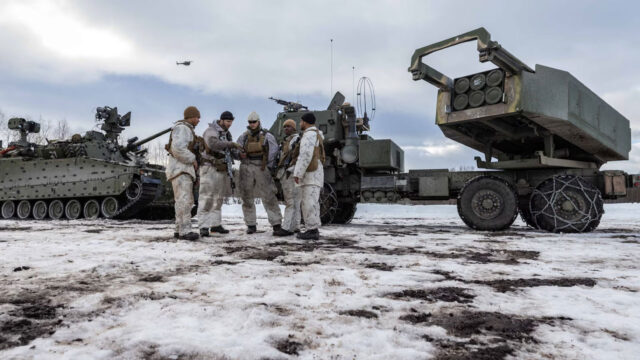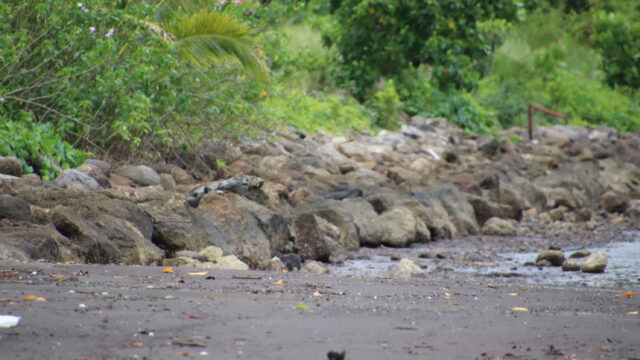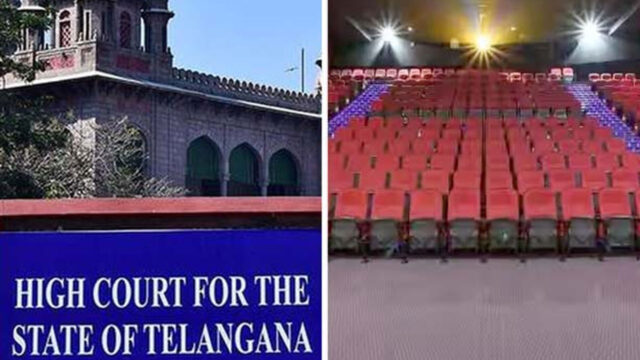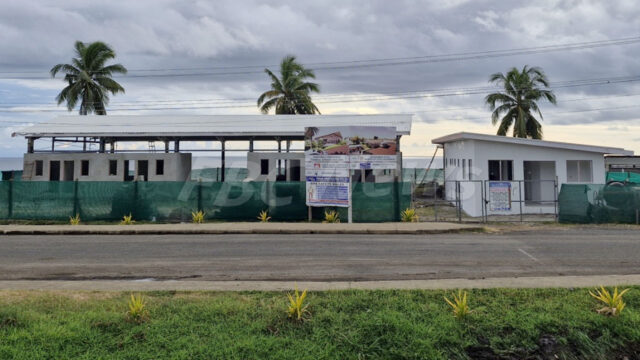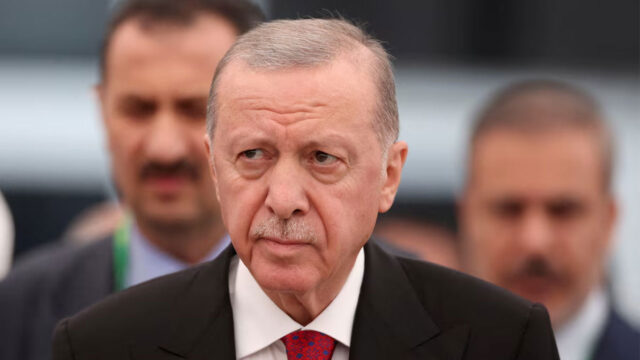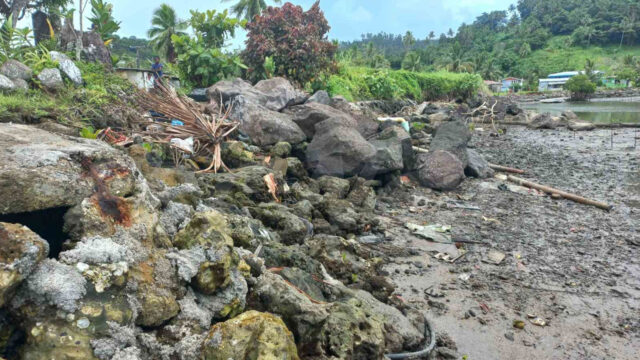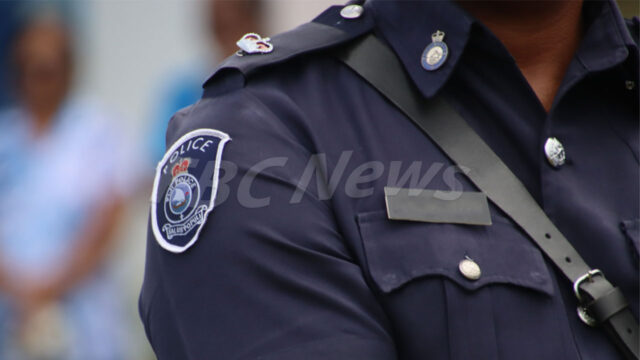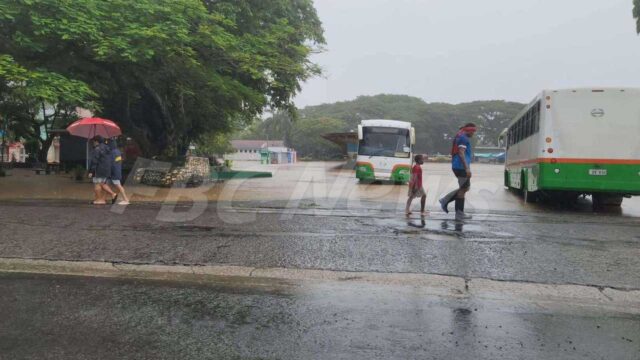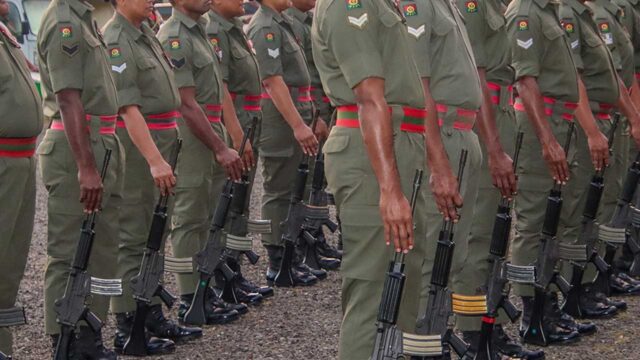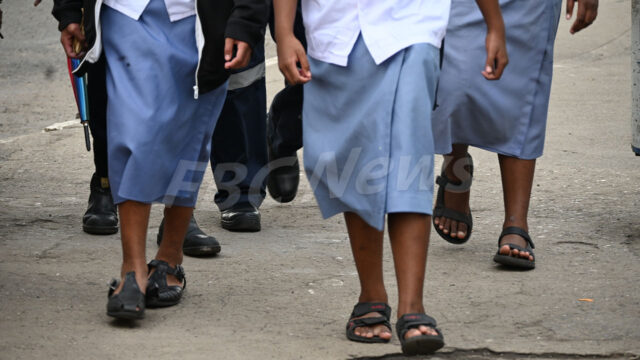
A U.S. Air Force F-16 Fighting Falcon aircraft takes off for a nighttime mission at Bagram Airfield, Afghanistan. [Source: Reuters]
U.S. military fighter jets on Sunday shot down an octagonal object over Lake Huron, the Pentagon said, the latest incident since a suspected Chinese surveillance balloon put North American security forces on high alert.
It was the fourth flying object to be shot down over North America by a U.S. missile in a little more than a week.
U.S. Air Force General Glen VanHerck, who is tasked with safeguarding U.S. airspace, told reporters that the military has not been able to identify what the three most recent objects are, how they stay aloft, or where they are coming from.
VanHerck said he would not rule out aliens or any other explanation.
Another defense official, speaking on condition of anonymity, subsequently said the military had not seen any evidence that the objects were extraterrestrial.
On President Joe Biden’s order, a U.S. F-16 fighter shot down the object at 2:42 p.m. local time over Lake Huron on the U.S.-Canada border, Pentagon spokesperson Brigadier General Patrick Ryder said in an official statement.
Though it did not pose a military threat, the object could have potentially interfered with domestic air traffic as it was traveling at 20,000 feet (6,100 m), and it might have had surveillance capabilities, Ryder said.
The object appeared to be octagonal in structure, with strings hanging off but no discernible payload, said a U.S. official speaking on condition of anonymity.
The object was believed to be the same as one recently detected over Montana near sensitive military sites, prompting the closure of U.S. airspace, the Pentagon said. The military will try to recover the object downed over Lake Huron to learn more about it, VanHerck told reporters.
He said it likely fell into Canadian waters.
The incident raised questions about the spate of unusual objects that have appeared over North American skies in recent weeks and raised tensions with China.
U.S. officials identified the first object as a Chinese surveillance balloon and shot it down off the coast of South Carolina on Feb. 4. On Friday, a second object was shot down over sea ice near Deadhorse, Alaska. And a third object was destroyed over Canada’s Yukon on Saturday, with investigators still hunting for the wreckage.
North America has been on guard against aerial intrusions following the appearance of the white, eye-catching Chinese airship over American skies earlier this month.
That 200-foot-tall (60-meter-high) balloon – which Americans have accused Beijing of using to spy on the United States – caused an international incident, leading Secretary of State Antony Blinken to call off a planned trip to China only hours before he was set to depart.
Pentagon officials said they have been scrutinizing radar more closely since then.
Surveillance fears appear to have U.S. officials on high alert.
Twice in 24 hours, U.S. officials closed airspace – only to reopen it swiftly.
On Sunday, the Federal Aviation Administration briefly closed space above Lake Michigan. On Saturday, the U.S. military scrambled fighter jets in Montana to investigate a radar anomaly there.
China denies the first balloon was being used for surveillance and says it was a civilian research craft. It condemned the United States for shooting it down off the coast of South Carolina last Saturday.
U.S. Senate Majority Leader Chuck Schumer told U.S. broadcaster ABC that U.S. officials think two of the latest objects were smaller balloons than the original one.
The White House said only that the recently downed objects “did not closely resemble” the Chinese balloon, echoing Schumer’s description of them as “much smaller.”
Canadian counterparts trying to piece together what was shot down over the Yukon may have their own challenges. The territory is a sparsely populated region in Canada’s far northwest, which borders Alaska. It can be brutally cold in the winter, but temperatures are unusually mild for this time of year, which could ease the recovery effort.
Republican lawmaker Mike Turner, who serves on the U.S. House Armed Services Committee, suggested the White House might be overcompensating for what he described as its previously lax monitoring of American airspace.
“They do appear somewhat trigger-happy,” Turner told CNN on Sunday. “I would prefer them to be trigger-happy than to be permissive.”
Republicans have criticized the Biden administration over its handling of the incursion by the suspected Chinese spy balloon, saying it should have been shot down much earlier.

 Reuters
Reuters




















